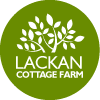The recent incidence of DIY chain store B&Q selling Valspar branded paint that turned out to smell terribly of cat pee once applied, and some of the suggested remedies for those unfortunate enough to have applied the paint, have highlighted some of the reasons why we won’t use regular paints here in any of our buildings.
 The paint itself is bad enough, but the suggested remedies include painting even worse substances over the top, or using plugin chemical air fresheners to mask the smell, which of course only adds to the problem.
The paint itself is bad enough, but the suggested remedies include painting even worse substances over the top, or using plugin chemical air fresheners to mask the smell, which of course only adds to the problem.
One of the biggest issues with most paints is the chemicals that are released into the atmosphere – your home – resulting in levels of Volatile Organic Compounds (VOC’s) up to 1000 times what you’d normally find. Paint isn’t the only place you’ll find these VOC’s – cleaning fluids, marker pens, and some particle boards and furniture are a common source. Be under no illusions, these substances are toxic, and the lengths the paint manufacturers ask you to go to when using them are a clue to just how toxic. Even ‘low voc’ paint turns out not to be great – the low voc part may refer to the base paint and not the tint.
The idea of not introducing unnecessary chemicals into our homes is important – we spend a lot of time around them, and the levels of chemicals have been steadily increasing over the last 50 years. The mass uptake of materials like MDF and other particle boards, some kind of flame retardants in furniture, woodworm treatments, air fresheners, sealants, cleaning products, not to mention the idea of enclosing modern buildings entirely in foil backed, isocyuranate insulation, means that millions of families are living in an experimental toxic smog.

Walls decorated with home made white clay paint – no chemicals
There are, however, alternatives, and some very good ‘eco’ paints that aren’t toxic. The likes of Ecos, Auro, Lakeland and Earthborn produce finishes that won’t harm you, and of course you can always make your own paint. The Natural Paint Decorator is an excellent book, or a mixture of clay, fine sand and wheat paste (plain flour and water) makes an excellent surface finish.
Now, more than ever it is so important that we think carefully about the materials we introduce into our homes – after thousands of years of creating our own shelter, the chemical industry is essentially doing live experiments on just a few generations. The Gaia Natural House Book is a really good starting place if you want to clean up your living space.





